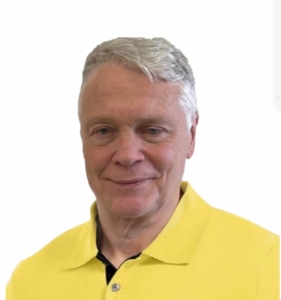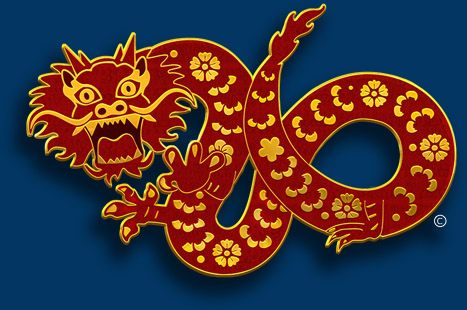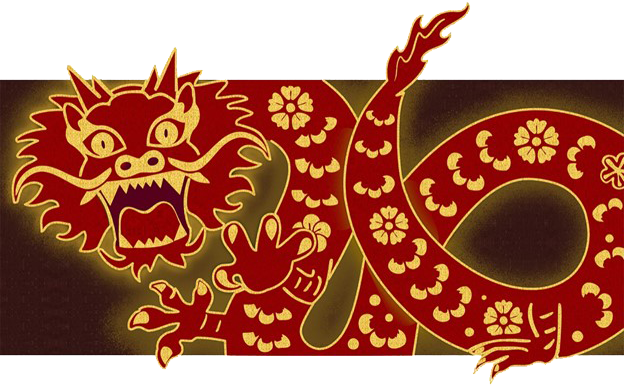The O-Soto-Gari Judo Throw In Jujutsu & Karate
by Christopher Caile
Editor's Note: This article is a companion piece to the two previous articles on "The Classical O-Soto-Gari Judo Throw." Part I of this series discussed why the author didn't think the throw worked as it was traditionally taught. Part II is a rebuttal of that view. This article will provide an historic overview of the throws roots in jujutsu and other combative arts and compare the throw's execution in these arts to that performed in judo.
Introduction
O-soto-gari is one of the most basic throws in judo. It is important to remember that the throw had its genesis in combat and self-defense related systems. In judo, which derived out of earlier self-defense oriented jujutsu systems, the throw evolved into a technique set up by off-balancing and body control. (1) The focus is on the setting up and execution of the throw itself.
In jujutsu, aikijujutsu, karate and many other combat oriented systems, the throw is only part of a multi-part technique. An attack is first countered, nullified, or avoided. A counter attack often follows. This leads up to the execution of the throw itself, which is often followed by a secondary (to the impact of the throw) finishing technique.
To help illustrate the historic context of the modern judo o-soto-gari throw, this article will demonstrate a few empty hand jujutsu combinations that employ this technique as well as a daito-ryu example of how this technique was used in combat against an attack from a short sword. Several karate examples will also be illustrated. (2) This article attempts to provide the reader with a historic conceptual understanding of the roots of this technique rather than attemption to catalog its many possiblities.
Kano's Original Jui-Jitsu (Judo)
Judo was developed by Jigoro Kano in 1882 as a synthesis of several earlier jujutsu (jui-jitsu) systems that were modified over time for the competition environment seen today. When first developed, however, the art was very different from what is practiced today. In the early days of judo (from its inception and for the next 20 years or so) it faced stiff competition from traditional jujutsu systems and a number of challenge "no-holds barred" matches were held.
In 1924 the Kano system of jui jitsu or judo was presented (with a few additions) in a book, "The Complete Kano Jui-Jitsu," authored by H. Irving Hancock and Katsukuma Higashi. The authors explained that the book was the first authentic work to explain the art as practiced in
Japan. 

|
Notice here the authors say kick rather than sweep. Early execution of this type of technique used a kicking motion rather than a sweep of the leg as is practiced today. This will be illustrated in more detail below in an example from Daito-ryu.
In this application if an opponent grabs around the waist, the defender is advised to use his right hand to "throw off" the attackers left arm with the right elbow, grab around the attacker's neck with the right arm and secure it with a grip on the attacker's uniform lapel. The right hand seize the opponent's left elbow.
In the second photo the defender kicks the back of the assailant's left knee forcing him backward to the position seen in the third photo. With a headlock in place the defender uses the left arm to seize his own left wrist — and tighten the "V" lock on the attacker's neck to put pressure on the front of the neck (The book notes that this technique can break the opponent's neck). In modern judo a necklock is usually performed against the side of an opponent's neck (cutting off blood flow to cause temporary unconsciousness). The more dangerous type of windpipe technique shown here is discouraged today in order to avoid injury (See an article on this subject, "The Judo Choke").
The essential point here is that in these jujutsu techniques, the defender isn't competing to throw a skilled opponent as in modern judo, but is responding to an attack, the attacker usually not having any knowledge of jujutsu techniques. In addition a lot more than unbalancing is involved. This is further illustrated in another jujutsu technique illustrated below.




This example is a simple jujutsu defense against a choke in which the hands are clenched or held together and thrust upward against the assailant's arms to dislodge the attack (the fingers can also be opened and directed to also attack the eyes- not shown). Then the defender wraps his left arm around (and pulls) the attacker's right elbow while using his right palm as a strike/push upward (and back) against the attacker's chin. At the same time the defender steps forward at an angle to his left which forces the assailant's weight onto his right leg while the push/pull action forces the attacker's body to arch backward. In the final photo the throw is executed.
Here the defender is doing a lot more than just off-balancing. The defender attacks and stuns the assailant with a counter attack while also off balancing him.
In many jujutsu techniques, strikes (atemi) or kicks are used not to severely hurt or knock out an opponent, but to stun, distract or make the assailant react (flinch). Thus they are used to set up the jujutsu technique, a component of which can be a throw.
Footnotes:
(1) Jigoro Kano (1860-1938) developed his own synthesis of several jujutsu systems called kodokan judo — principally from Tenjin shinyo ryu jujitsu which specialized in striking and grappling techniques and kito ryu which emphasized throwing techniques. The new art eliminated many of jujutsu's most dangerious techniques. Such things as atemi. or the arm of striking is only taught at higher levels, while certain methods of throwing, joint manipulations and specific self-defense counters have been eliminated. Today Judo focused on the pure aspects of throwing and grappling so students can practice and compete safely.
(2) Only a few of the literally thousands of possible applications drawn from jujutsu, daito-ryu, other aikijujtsu systems, karate and other combat dicplines could be illustrated here.
About the Author Christopher Caile

Screenshot
Christopher Caile is the Founder and Editor-In-Chief of FightingArts.com. He has been a student of the martial arts for over 65 years.
He first started in judo while in college. Then he added karate as a student of Phil Koeppel in 1959 studying Kempo and Wado-Ryu karate. He later added Shotokan Karate where he was promoted to brown belt and taught beginner classes. In 1960 while living in Finland, Caile introduced karate to that country and placed fourth in that nation's first national judo tournament.
Wanting to further his karate studies, Caile then hitch hiked from Finland to Japan traveling through Scandinavia, Europe, North Africa, the Middle East and South and Southeast Asia — living on 25 cents a day and often sleeping outside.
Arriving in Japan (1962), Caile was introduced to Mas Oyama and his fledgling full contact Kyokushinkai Karate by Donn Draeger, the famous martial artist and historian. Donn also housed him with several other senior international judo practitioners. Donn became Caile's martial arts mentor, coaching him in judo and introducing him to Shinto Muso-ryu under Takaji Shimizu.
Caile studied at Oyama's honbu dojo and also at Kenji Kurosaki's second Tokyo Kyokushinkai dojo. In his first day in class Oyama asked Caile to teach English to his chief instructor, Tadashi Nakamura. They have been friends ever since. Caile also participated in Oyama's masterwork book, "This Is Karate."
Caile left Japan with his black belt and designation as Branch Chief, the first in the US to have had extensive training in Japan directly under Oyama Sensei. As such, Oyama Sensei asked him to be his representative on visits to his US dojos to report on their status.
A little over a year later, Nakamura, Kusosaki and Akio Fujihira won an epic David vs. Goliath challenge match against Thailand's professional Muay Thai Boxers in Bangkok, Thailand, thrusting Kyolushinkai and Nakamura into national prominence.
Back in the US Caile taught Kyokushinkai karate in Peoria, Il while in college and later in Washington, DC. while in graduate school. Durimg this time Shihan Nakamura had moved to New York City to head Kyokushinkai's North American Operation.
In 1976 when Kaicho Tadashi Nakamura formed the World Seido Karate organization, Caile followed. Living then in Buffalo, NY, Caile taught Seido karate and self-defense at the State University of New York at Buffalo (SUNY Buffalo) for over 15 years where he also frequently lectured on martial arts and Zen in courses on Japanese culture.
Caile moved to New York City in 1999 to marry Jackie Veit. He is now an 8th degree black belt, Hanshi, training in Seido Karate's Westchester, NY Johshin Honzan (Spiritual Center) dojo. In Seido Caile is known for his teaching of and seminars on kata applications. He also produced a 14 segment video series on Pinan kata Bunkai currently available to Seido members.
Caile is also a long-time student and Shihan in Aikido. He studied in Buffalo, under Mike Hawley Shihan, and then under Wadokai Aikido's founder, the late Roy Suenaka (uchi deshi under Morihei Ueshiba, founder of Aikido and was Shihan under Tohei Sensei). In karate, Suenaka (8thdan) was also an in-house student of the Okinawan karate master Hohan Soken.
Having moved to New York City, Caile in 2000 founded this martial arts educational website, FightingArts.com. Twenty-five years later, in 2025, it underwent a major update and revision.
For FightingArts.com and other publications Caile wrote hundreds of articles on karate, martial arts, Japanese art, Chinese Medicine and edited a book on Zen. He also developed relationships with a cross section of leading martial arts teachers. Over the last four decades he has conducted extensive private research into karate and martial arts including private translations of the once secret Okinawan hand copied and passed on Kung Fu book, the Bubishi, as well as an early karate book by the karate master Kenwa Mabuni. He periodically returns to Japan and Okinawa to continue his studies and participate Seido karate events. In Tokyo he practiced (with Roy Suenaka Sensei) in a variety of aikido organizations with their founders – including private interviews and practices at the Aiki-kai Aikido Honbu dojo with the son and grandson of aikido's founder, Doshu (headmaster) Kisshomaru (an old uchi-deshi friend) and his son, Moriteru Ueshiba and in Iwama with Morihiro Saito. On Okinawa he studied Goju Ryu karate under Eiichi Miyazato, 10th dan founder of Naha's Jundokan, and also with Yoshitaka Taira (who later formed his own organization, who specialized in kata Bunkai. While there Caile also trained with Hohan Soken's senior student, Master Fusei Kise, 10 dan as well as with the grandson of the legendary karate master Anko Itosu.
Caile's other martial arts experience includes: Diato-ryu Aikijujitsu and Kenjitsu, kobudo, boxing, Muay Thai, MMA, Kali (empty hand, knife and bolo), study of old Okinawan Shoran-ryu & Tomari body mechanics, study of old Okinawan kata under Richard Kim, study of close quarter defense and combat, including knife and gun defenses, Kyusho Jitsu and several Chinese fighting arts including 8 Star Praying Mantis, Pak Mei (White Eyebrow), and a private family system of Kung Fu.
Caile is also a student of Zen as well as a long-term student of one branch of Traditional Chinese Medicine, Chi Kung (Qigong). As one of two senior disciples of Chi Kung master Dr. Shen (M.D., Ph.D.) Caile was certified to teach and practice. This led to Caile's founding of the The Chi Kung Healing Institute on Grand Island, NY. In Western NY, he also frequently held Chi Kung seminars, including at SUNY Buffalo and at the famous Chautauqua Institution in Chautauqua, NY. His articles on Chi Kung also appeared in the Holistic Health Journal and in several books on alternative medicine.
Caile holds a BA in International Studies from Bradley University and MA in International Relations with a specialty in South and Southeast Asia from American University in Washington, D.C. While in Buffalo, NY he also studied digital and analog electronics.
In his professional life Caile also worked in public relations and as a newspaper reporter and photographer. Earlier he worked in the field of telecommunications including Managing a Buffalo, NY sales and service branch for ITT. He then founded his own private telephone company. This was followed by creation of an electrical engineering company that designed and patented his concept for a new type of low-cost small business telephone system (which was eventually sold to Bell South). The company also did contract work for Kodak and the US space program. Simultaneously Caile designed and manufactured a unique break-apart portable pontoon boat.
Most recently Caile co-founded an internet software company. Its products include software suites with AI capability for control and management of streaming media, such as video and music, an all-in-one book publishing software product for hardcover, eBook and audio book creation and security software for buildings and government use.
For more details about Christopher Caile's martial arts, work experience and life profile, see the About section in the footer of this site.
Search for more articles by this author:









